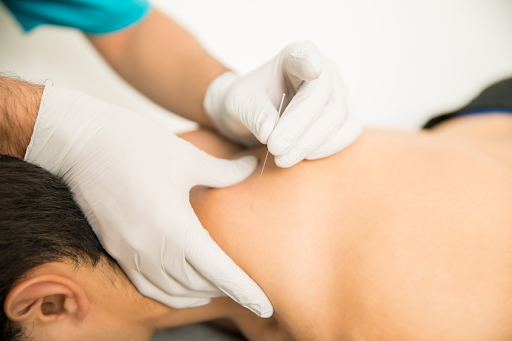What Is Dry Needling?
This is also called “myofascial trigger point” dry needling or” trigger point” dry needling. Myofascial discomfort may be treated by acupuncturists, chiropractors, medical physicians, and even physical therapists. In order to get the word “myofascial” you combine the roots “myo” and “fascia” (which refers to the tissue that connects muscle).
Trigger points are tense regions of muscle that may become inflamed. When pressed, these trigger points may be very painful, and they often cause referred pain (or pain that affects another part of the body). Thin, solid needles are injected into trigger sites by doctors, and the needles are not used to provide medicine but to stimulate the tissue.
The way your body moves may be affected by pain. As a result of changing the way the brain and muscles communicate, dry needling may help restore more normal movement patterns.
There are many feelings that a patient may have while being needled, including discomfort, aching and twitching of the muscles. Depending on the kind of pain being treated and how long it has lasted, the needles may be inserted deeply or superficially, and for shorter or longer periods. More time means that the needle will remain in the muscle for 10 to 15 minutes, while less time means that the needle will stay in the muscle for seconds.
What Types Of Pain Does Dry Needling Treat?
When dry needling is performed, it’s usually part of a broader treatment strategy that includes exercise, physical therapy, heat therapy, and information about the condition being treated. Dry needling may help those with a restricted range of motion because of muscular stiffness or scar tissue formed over time. Dry needling may also be used to treat the following conditions:
- Joint issues
- Disk problems
- Tendinitis
- Headaches (migraines and tension)
- Difficulty chewing and speaking (such as temporomandibular joint disorders or TMD)
- Whiplash
- Disorders of repetitive motion (like carpal tunnel syndrome)
- Spine issues
- Burning sensation in the lower abdomen
- Constipation in the middle of the night
- Phantom discomfort
- Nerve discomfort after anthrax exposure
Who should not have dry needling treatments?
- Pregnant women
- Patients unable to understand
- Patients who are phobic of being poked
Also, if a patient is thinking of getting dry needling, they should talk to their doctor beforehand. Those on blood thinners and those who have recently had surgery are at higher risk of bleeding complications.
4 Advantages To Dry Needling
It is possible to relax the muscles, increase blood flow, reduce inflammation and initiate a healing response by inserting an acupuncture-like needle into the trigger point. This procedure also enhances nerve transmission and triggers the production of your body’s natural painkillers.
Dry needling stimulates four advantageous phenomena:
- Getting quick and effective pain relief
Typically, when people think of trigger points, they think of tense muscles in the shoulder, upper back or neck region. However, the same issue may occur elsewhere in your body and be linked to a wide range of diseases, from low back and neck discomfort to joint pain and overuse injuries.
As the knot loosens and blood flow increases, your discomfort will lessen. As a result of increased circulation, unpleasant acidic wastes are transported away, and your muscles get the oxygen and nutrition they need to recover.
After only one dry needling session, many patients report lessening of both local and generalized pain. Others may need a number of visits to fully alleviate their symptoms. As a result, the intensity and quantity of trigger sites will affect your treatment strategy.
- Regaining your flexibility
Tight, aching muscles are one of the most debilitating things that may slow you down. Multiple trigger points may significantly restrict your range of motion, plus muscles weaken and mass decreases when you aren’t active.
In order to develop your strength and regain your complete range of motion, Fraser Life Physiotherapy often combines dry needling with a physical therapy regimen. Additionally, physical therapy helps to retrain your muscles, which reduces the likelihood of getting trigger points again in the future.
- Boosting your recuperation time
Moving your body is the greatest method to promote healing and hasten your recovery after an accident or surgery. During your recovery, you’ll mostly be doing physical therapy. Adding dry needling to physical therapy speeds up the healing process considerably.
- Improving the circumstances of chronic pain
Myofascial pain syndrome and fibromyalgia both benefit greatly from dry needling therapy.
Facet joint syndrome is triggered by trigger points in the fascia that surround and support all of your muscles, nerves, blood vessels and organs. Myofascial pain syndrome is a result of this. Physical therapy and dry needling are two of the most effective therapies for this kind of persistent pain.
Fibromyalgia is characterized by widespread muscular pain and discomfort. Trigger points develop as a result of the pain altering your movements. Many fibromyalgia patients find that they have less pain after receiving dry needling treatment.
Give Langley’s dry needling experts at Fraser Life Physiotherapy a call at (778) 278-4755.
< Previous | Home | Next >



Recent Comments